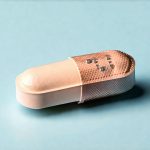Chronic bladder pain, often associated with conditions like interstitial cystitis (IC), can be debilitating, significantly impacting quality of life. For many sufferers, finding effective long-term relief proves elusive. Traditional treatments often provide limited success, leading patients to explore alternative and complementary therapies. One such avenue gaining increasing attention is the use of vaginal estrogen therapy, even in women who are postmenopausal or have never given birth. This approach isn’t about treating a gynecological condition; it’s about leveraging the potential benefits of localized estrogen to address the complex interplay between hormonal changes, pelvic floor dysfunction, and bladder pain sensitivity.
The rationale behind this treatment stems from growing understanding of the role estrogen plays in maintaining healthy urothelial function—the lining of the bladder—and its impact on pelvic nerve sensitivity. Reduced estrogen levels, whether due to menopause, childbirth, or other factors, can contribute to a thinning and increased permeability of the bladder lining, making it more vulnerable to irritants and inflammation. Furthermore, estrogen influences the nervous system’s perception of pain, potentially lowering the threshold for experiencing discomfort. While research is ongoing, early findings suggest that restoring localized estrogen levels may offer a novel approach to managing chronic bladder pain, providing relief where other methods have fallen short. Can vaginal estrogen improve bladder symptoms?
Understanding the Link Between Estrogen and Bladder Health
The relationship between estrogen and bladder health isn’t immediately obvious, but it’s rooted in the intricate hormonal regulation of pelvic tissues. Estrogen receptors are found throughout the urinary tract, including the bladder lining (urothelium), urethra, and pelvic floor muscles. These receptors allow estrogen to directly influence cellular function and tissue integrity. When estrogen levels decline – as they naturally do during menopause or after childbirth – these tissues can undergo changes that contribute to bladder pain symptoms. Specifically, a decrease in estrogen leads to:
- Thinning of the urothelium, making it more susceptible to irritation from urine components
- Reduced production of hyaluronic glycosaminoglycans (GAGs), protective molecules that create a barrier within the bladder lining, further increasing sensitivity
- Changes in pelvic floor muscle function, potentially leading to spasms and increased pressure on the bladder
- Altered nerve signaling pathways, amplifying pain perception
These changes can collectively result in symptoms characteristic of IC/BPS (Interstitial Cystitis/Bladder Pain Syndrome), such as frequent urination, urgency, painful intercourse, and chronic pelvic pain. It’s important to note that estrogen deficiency isn’t necessarily the cause of IC/BPS, but it can significantly exacerbate symptoms and contribute to a vicious cycle of inflammation and pain. Can mild bladder irritation become chronic?
How Vaginal Estrogen Therapy Works for Bladder Pain
Vaginal estrogen therapy delivers low-dose estrogen directly to the tissues of the vagina and surrounding pelvic region, bypassing systemic absorption that occurs with oral estrogen pills. This localized approach minimizes potential risks associated with systemic hormone replacement therapy (HRT). The most common forms include:
- Estrogen creams: Applied internally to the vagina.
- Estrogen rings: Inserted into the vagina and replaced periodically.
- Estrogen suppositories/tablets: Dissolved vaginally.
The estrogen absorbed locally works to restore some of the lost function in the bladder and pelvic floor. It helps to rebuild the protective barrier within the bladder lining by increasing GAG production, reducing inflammation and improving tissue health. Furthermore, it can modulate nerve sensitivity, potentially decreasing the perception of pain signals. Unlike oral HRT which affects the entire body, vaginal estrogen has minimal impact on other hormonal systems. This targeted delivery makes it a more attractive option for women experiencing bladder pain, particularly those who are hesitant about systemic hormone therapy or have contraindications to its use.
Investigating the Evidence: Research and Clinical Findings
The scientific evidence supporting the use of vaginal estrogen for bladder pain is evolving but promising. Several studies have shown that localized estrogen therapy can significantly reduce IC/BPS symptoms, including urinary frequency, urgency, and pain. A 2019 meta-analysis published in Female Pelvic Medicine & Reconstructive Surgery concluded that vaginal estrogen was associated with a significant improvement in bladder pain symptoms compared to placebo. While more large-scale, randomized controlled trials are needed, existing research suggests this therapy can be a valuable adjunct to other IC/BPS treatment strategies.
Importantly, the benefits of vaginal estrogen aren’t limited to postmenopausal women. Some studies have indicated that even premenopausal women with bladder pain may experience relief from localized estrogen therapy, suggesting it’s not solely about restoring lost hormone levels but also about modulating tissue function and nerve sensitivity. However, this is an area requiring further investigation. It’s crucial for patients to discuss the potential benefits and risks of vaginal estrogen with their healthcare provider to determine if it’s appropriate based on their individual circumstances. Can vaginal estrogen reduce UTI recurrence?
Considerations Before Starting Vaginal Estrogen Therapy
Before initiating vaginal estrogen therapy, a thorough medical evaluation is essential. This includes a detailed history of symptoms, physical examination, and potentially urodynamic testing (to assess bladder function). Your doctor will also need to rule out other potential causes of bladder pain, such as urinary tract infections or underlying gynecological conditions.
- Contraindications: Certain medical conditions may preclude the use of vaginal estrogen, including a history of estrogen-sensitive cancers (breast, uterine), unexplained vaginal bleeding, or active thrombotic disease.
- Potential Side Effects: While generally well-tolerated, vaginal estrogen can cause mild side effects such as vaginal dryness, spotting, or breast tenderness. These are usually temporary and resolve with continued use or dosage adjustments.
- Dosage & Administration: Dosage and frequency of application vary depending on the specific product used and individual patient needs. It’s crucial to follow your healthcare provider’s instructions carefully.
Long-Term Management and Integrative Approaches
Vaginal estrogen therapy is often part of a broader, integrative approach to managing chronic bladder pain. Other components may include:
- Pelvic Floor Physical Therapy: Strengthening and relaxing the pelvic floor muscles can alleviate pressure on the bladder and improve urinary control.
- Dietary Modifications: Identifying and avoiding dietary triggers (e.g., caffeine, acidic foods) can help reduce bladder irritation.
- Stress Management Techniques: Chronic stress can exacerbate pain symptoms; techniques like mindfulness, yoga, or meditation can be beneficial.
- Bladder retraining: Gradually increasing the time between urination to improve bladder capacity and reduce urgency.
It’s essential to remember that chronic bladder pain is a complex condition with no one-size-fits-all solution. A collaborative approach involving healthcare professionals – including gynecologists, urologists, physical therapists, and pain specialists – can help develop a personalized treatment plan tailored to individual needs and goals. While vaginal estrogen therapy offers a promising avenue for relief, it’s most effective when integrated into a comprehensive management strategy that addresses the multifaceted nature of this challenging condition. Can UTIs be mistaken for ovarian pain?





















